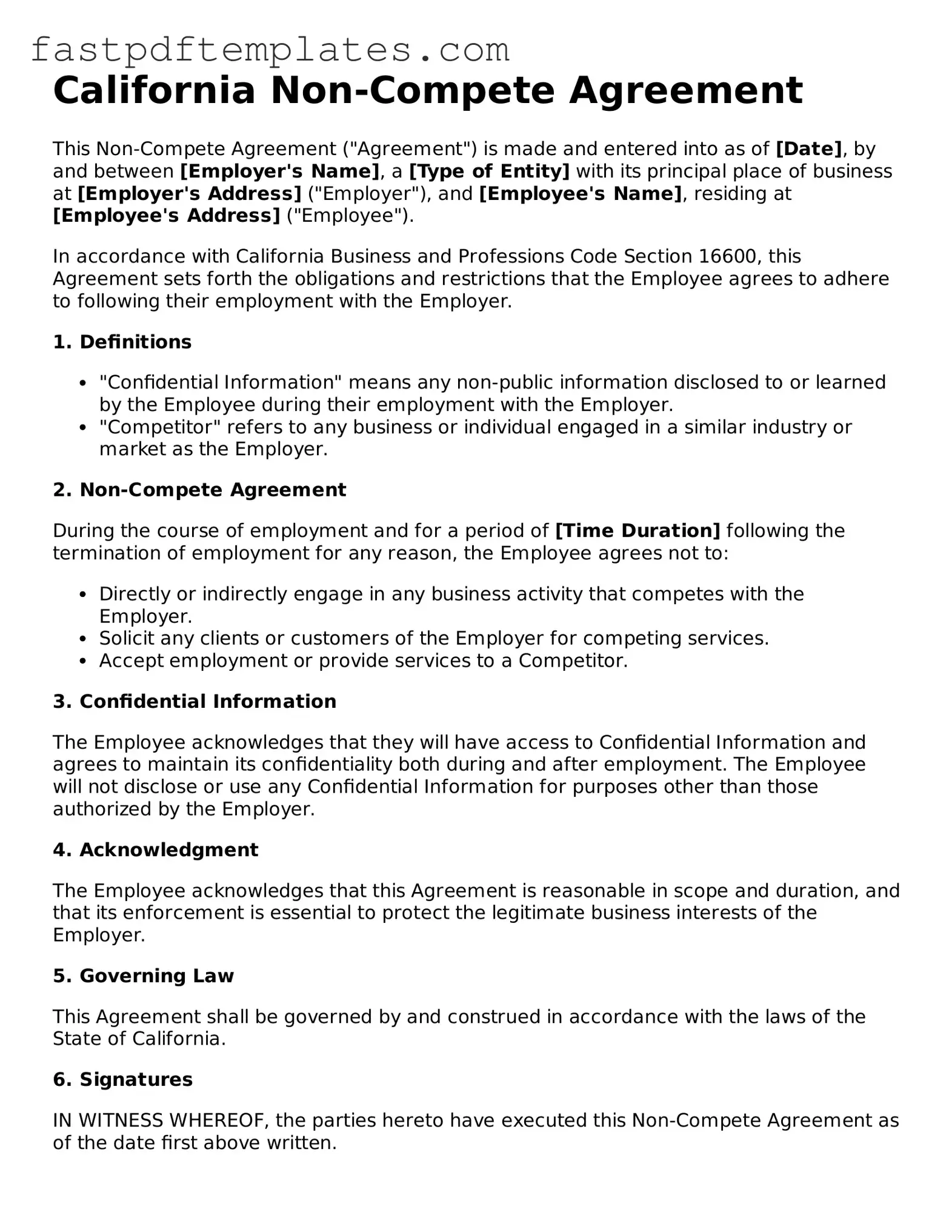California Non-Compete Agreement
This Non-Compete Agreement ("Agreement") is made and entered into as of [Date], by and between [Employer's Name], a [Type of Entity] with its principal place of business at [Employer's Address] ("Employer"), and [Employee's Name], residing at [Employee's Address] ("Employee").
In accordance with California Business and Professions Code Section 16600, this Agreement sets forth the obligations and restrictions that the Employee agrees to adhere to following their employment with the Employer.
1. Definitions
- "Confidential Information" means any non-public information disclosed to or learned by the Employee during their employment with the Employer.
- "Competitor" refers to any business or individual engaged in a similar industry or market as the Employer.
2. Non-Compete Agreement
During the course of employment and for a period of [Time Duration] following the termination of employment for any reason, the Employee agrees not to:
- Directly or indirectly engage in any business activity that competes with the Employer.
- Solicit any clients or customers of the Employer for competing services.
- Accept employment or provide services to a Competitor.
3. Confidential Information
The Employee acknowledges that they will have access to Confidential Information and agrees to maintain its confidentiality both during and after employment. The Employee will not disclose or use any Confidential Information for purposes other than those authorized by the Employer.
4. Acknowledgment
The Employee acknowledges that this Agreement is reasonable in scope and duration, and that its enforcement is essential to protect the legitimate business interests of the Employer.
5. Governing Law
This Agreement shall be governed by and construed in accordance with the laws of the State of California.
6. Signatures
IN WITNESS WHEREOF, the parties hereto have executed this Non-Compete Agreement as of the date first above written.
[Employer's Name]
By: ___________________________
Name: [Printed Name]
Title: [Title]
[Employee's Name]
By: ___________________________
Name: [Printed Name]
